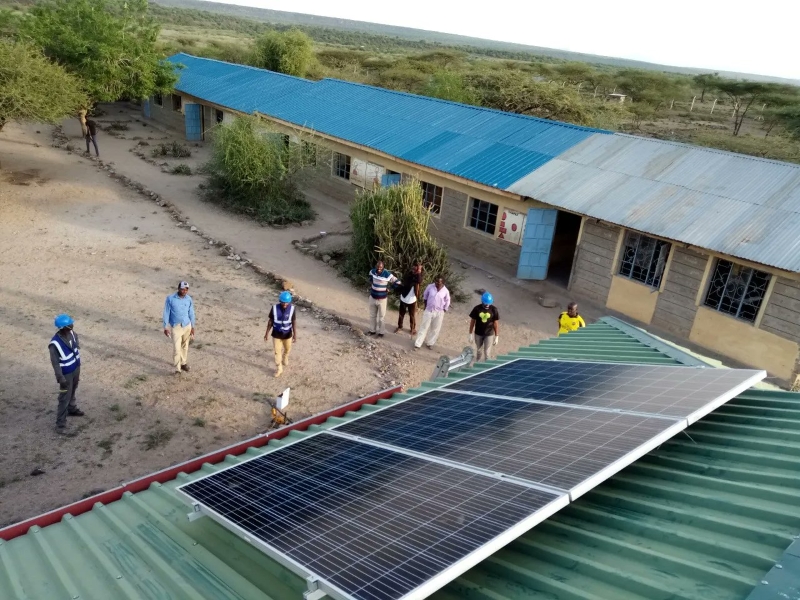Tallinn – Renewable energy is quickly expanding throughout the world, owing to economics, environmental concerns, and the need for energy security. To achieve net-zero carbon emissions by 2050, $173 trillion in energy transition spending will be required. Sustainable investments have already hit $4 trillion, according to BlackRock. Every hour, the sun sends out enough energy to power the entire earth for a year. That’s 430 followed by 18 zeros! The total amount of energy consumed by all humans in a year is 410 quintillion Joules. How prepared is the world to receive and utilize this quantity of energy? Crypto mining, and NFTs, appear to be the solution.
NFT can help subsidize the cost of renewable energy through minting – mining. Simultaneously, it incentivises crypto-related education, fuel agribusiness, and socio-economic development.
NFTs enable issues that are underfunded or even disregarded to be handled collaboratively and with incentives. Adoption of open-source, decentralized technology has the potential to significantly accelerate decarbonization projects for the good of the world, resulting in unparalleled levels of creativity and transparency. The NFTs follow Melanin Solar’s excellent pilot project in Africa, as well as the Whive Protocol’s decentralized teams and contributors, the Sustainable World Initiative (SWI), and Kanairo.com’s media team. They’re developing a community-led approach to sustainability, with the goal of generating more resilient responses to issues like energy insecurity by combining the metaverse to sustainability through non-fungible tokens (NFTs).
By funding new technologies and community-led sustainable projects among Indigenous Peoples, the aforementioned entities have launched the HaPeeBee NFT collection, which is driving energy transition through thematic sustainable impact and inventing through crowd-grid frameworks for the net zero world. It is undeniably the kind of vision required for indigenous communities to avoid being left behind in the race to zero. Through a combination of financing, direct action, and gamification, the goal is to boost global participation in sustainable concerns. NFTs achieve this through encouraging and facilitating collaborative and inclusive activities.
A Metaverse
Planning to release a metaverse down the roadmap, the organizations say that the Nyukiaverse, “Nyukia”, deploys location-based NFTs to expand community engagement and increase rarity level.
Nyukia (Nyukiaverse) is a metaverse committed to sustainability concepts. The inner workings of bees inspired this thought. A global icon for sustainable activities, biodiversity conservation, economic efficiency, and ecological integrity, the bee is a symbol of gentle and aggressive strength. Getting your HaPeeBee NFT will help underserved populations have access to clean energy, build resilient livelihoods, promote environmental protection, and accelerate the growth of renewable energy.
NFTs are elevated to a new level with location-based rewards, giving artists, collectors, gamers, and developers more options and opportunities for involvement, not to mention the added value of long-term impact.
NFTs Can Power Frugal Innovation Among Indigenous Peoples
The successful pilot among the Maasai of Kenya that served as the basis of the release of these NFTs, affirms the critical importance of crypto in accelerating frugal innovation among Indigenous Peoples and communities that have historically been neglected with regard to energy access.

“There was no proper lighting in many local institutions at the village coupled with insecurity at night. Since we got Melanin Solar, we have made savings on costs that would go towards purchasing petrol,” Village Elder, Singiraine village.
The adoption of open-source, decentralized technology can accelerate progress toward decarbonization initiatives for the good of the earth, resulting in transformational levels of innovation and transparency. In terms of decarbonization, blockchain has the potential to expedite a shared vision and provide market-driven solutions. It’s a collaborative effort to ensure that the industry doesn’t exacerbate the effects of climate change.
Aside from digital energy storage, the distributed energy project offers a number of other advantages to the community, such as the opportunity to share energy in a peer-to-peer (p2p) marketplace using blockchain technology. In rural places, someone may have a solar system with extra electricity that might help someone else, enabling versatile access to energy without a high upfront capital cost.
The project and the release of the NFTs assert that the project has the benefit of turning consumers of solar energy who rely on loans to acquire solar home systems to become prosumers, producing, consuming, storing, and sharing excess energy with members of their community in a scalable manner.
The impressive year-long experiment proves that clean energy solutions employing blockchain technology are not unreachable not only for populations living in remote places, but also for city dwellers. As a result, Melanin Solar intends to increase usage by tapping into the $2 trillion African market for peer-to-peer solar energy powered by blockchain.
Providing a glimpse into the future, the NFTs pave the way for Indigenous Peoples to be at the forefront of global energy innovation and climate action, fuelled by the power of technology to effect change, a welcome prospect in Singiraine village, where the hope of a brighter future in the sun is rising.
Source: Nyukia





